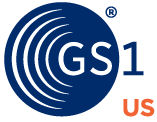Want to learn more about barcodes and how to get started?
How it works
Have you scanned a product in a checkout line? Then you’ve seen a barcode in action. By reading the barcode, a scanner knows that item, knows the exact, real-time price, and can tell the store it needs to restock its shelves. It is a better, more efficient shopping experience for both the business and the customer. Yet it’s just the beginning of what unique identification through barcodes can do.
About Barcodes
How you set up barcodes through GS1 US®:
- You obtain a unique company identification number called a GS1 Company Prefix. It will identify your company to businesses all over the world
- Using that prefix, you add a number that specifically identifies your product. Combined with a check digit, this creates a GTIN® (Global Trade Item Number®) that identifies both your company and that product
- You take this GTIN and create a barcode from it that can be scanned

Ready for your own barcodes right now?
How Barcodes Are Used and Where They Are Used
Barcodes and product identifiers like a GTIN and location identifiers like a Global Location Number (GLN) have been integrated into our modern lives to increase efficiency, productivity, and customer satisfaction. Every day, they are used in:
Inventory management and traceability
- Managing inventory levels
- Tracking medical devices, pharmaceuticals, and food to help ensure patient and consumer safety
Point of sale accuracy
- Scanning and identifying products at point of sale (checkout), online, and at warehouses
- GTINs make it easier for your products to be found in web searches and online marketplaces, leading to a better consumer experience and increased revenue for you
Regulatory compliance
- Medical device manufacturers use GS1 GTINs and barcodes to support U.S. FDA UDI regulatory requirements. GS1 is a FDA-accredited issuing agency for U.S. FDA UDI*
- GS1 Standards can also be applied for Drug Supply Chain Security Act (DSCSA) serialization, lot-level management, and item-level traceability**
Shipping and receiving
- Barcodes and product and location identifiers are used by businesses to manage how they exchange goods within their supply chain
- Different barcodes and product and location identifiers can identify a product, its origin and current location in transit, and if it was received by a trading partner
Information sharing
- Capturing and sharing data like location, nutrition, and allergens so fresh foods growers, restaurants, and packaged goods businesses can share more complete and accurate information with trading partners and consumers
- Businesses can exchange information electronically to expedite invoicing and re-ordering
These and other business processes come through the power of barcodes and the Universal Product Code (U.P.C.) to Identify items, Capture accurate data, and Share that information with customers and businesses.
When you create a barcode using GS1 Standards, you are using standards that are recognized and accepted by businesses all over the world. This allows you to better communicate with your trading partners and consumers and build your business.
*For information about the rule, see the U.S. FDA Unique Device Identification System
**For information about the act, see the 2013 Drug Supply Chain Security Act
Disclaimer: GS1 US is the local GS1 Member Organization that supports implementation of the GS1 System in the United States. GS1 US employees are not representatives or agents of the U.S. FDA, and the content herein has not been reviewed, approved, or authorized by the U.S. FDA.
GS1 is a U.S. FDA-Accredited Issuing Agency for UDI, and GS1 Standards are authorized for use in implementing the requirements of the U.S. FDA UDI Rule.
